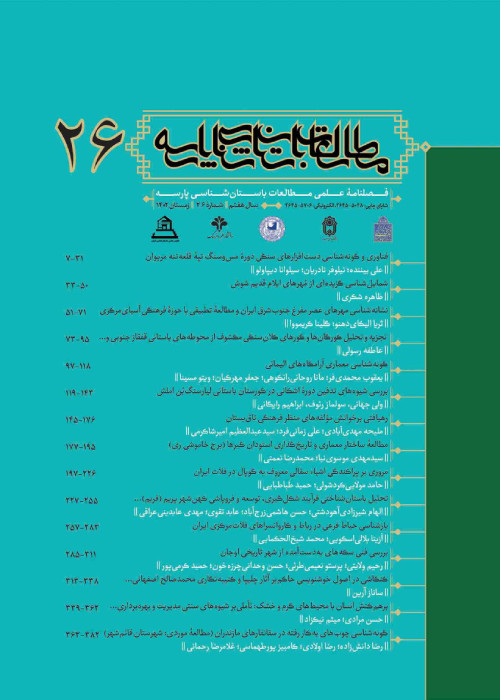Archaeological Excavations at Bisoutn Bridge: Stone, Brick and Lime Workshops
The Bisotun bridge was built across the Dinavar Ab River, flowing on the eastern outskirts of the present-day town of Bisotun. The construction of the bridge’s substructure was initiated in the late Sasanian period, but the program was abruptly terminated, as is the case with other Sasanian projects in Bisotun. Subsequently, the Ḥasanwayhids, a local Kurdish dynasty in western Iran, completed the construction of the bridge. High traffic and natural hazards such as floods and earthquakes have inflicted damage upon the bridge in subsequent periods, i.e., from the Saljuq era to the first Pahlavi period. Consequently, governments made considerable efforts to restore or reconstruct various parts of the bridge. Workshops were established at a short distance northeast of the bridge to provide construction materials for the restoration and reconstruction of the damaged parts. To the northeast of the bridge, there exists a low mound measuring 50 m in length and 40 m in width. The mound was excavated in 2002 under the direction of the present author, revealing four distinct archaeological strata. The earliest layer (I) includes a seasonal settlement from the Qajar period. Layer II contains a cemetery from the same period. Layer III encompasses several brick and lime kilns, dating back to the Ilkhanid and Qajar periods. Layer IV yielded parts of a stone-cutting workshop from the late Sasanian/ Ḥasanwayhid period. This article aims to provide the first comprehensive description of the findings within each archaeological stratum, using historical and descriptive-analytical research methods. We will also propose a chronological framework for the excavated materials based on archaeological evidence and thermoluminescence dating analysis. Furthermore, the article will delve into the production processes of brick and lime produced in the excavated kilns. Moreover, we will provide insights into the process by which the stone blocks were produced in the stone-cutting workshop.
Bisotun Bridge , Stone Workshop , Brick , Lime , Kiln , Cemetery
- حق عضویت دریافتی صرف حمایت از نشریات عضو و نگهداری، تکمیل و توسعه مگیران میشود.
- پرداخت حق اشتراک و دانلود مقالات اجازه بازنشر آن در سایر رسانههای چاپی و دیجیتال را به کاربر نمیدهد.


